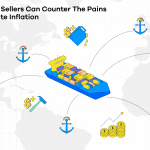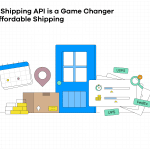
When it comes to ecommerce, it’s Amazon’s world, and online sellers just live in it. Ever since Amazon introduced its Amazon Prime free shipping service, online sellers have known that the rule of the jungle is to adapt or die.
Until recently, the $99 fee Amazon charged shoppers created a relatively high barrier to entry. This allowed smaller online sellers to work around the free shipping option and remain relevant. Now, however, the world has changed once again. With competition between Amazon and Walmart heating up, none of the old rules apply.
To counter Walmart’s free shipping option, Amazon recently extended free shipping to all purchases over $25. The move has left online sellers scrambling to stay profitable in this new, hyper-competitive environment. One tactic that won’t work is avoiding the issue and hoping it will disappear.
Surveys show that the option to have free shipping is a significant factor in 95% of online shoppers’ decisions to buy. Free shipping is here to stay.
What Can Online Sellers Do to Adapt to This New Challenge?
Luckily, the answer is plenty. One strategy ecommerce merchants can employ is to take advantage of buying plans offered by mid- to larger-scale shipping companies.
For example, FedEx and other outfits now offer tailored ecommerce services to smaller online storefronts. For a fee, online sellers can tap into FedEx’s nationwide networks of warehouses, trucks, and planes. This will allow online sellers to offer free shipping to their customers, who can expect delivery to their doorstep in less than 48 hours.
Some online sellers justifiably worry that offering free shipping will eliminate their profit margins. To be sure, free shipping improves conversion rates. But what good are high conversion rates if you lose money on every deal?
The first step to overcoming this obstacle is to examine the metrics closely. Sellers should assess baseline conversion rates with and without free shipping. Then, increase the selling price while still offering free shipping. Online shoppers will pay more for an item that includes free shipping. Lowballing the cost of an item, only to make up the difference in shipping fees, is a surefire way to lose the sale.
Eventually, by calibrating the price with free shipping, online sellers can find the correct amount to charge while still making money on the purchase. This strategy will likely work well for ecommerce businesses that offer unique, rare, or high-end items. Customers searching for these types of products are not necessarily looking for the lowest price. If the price is too low, buyers may shy away from the item, fearing it is of low quality.
What About Other Online Sellers Who Deal in Commodities or Competitive Niches?
Raising the price in those marketplaces can be dangerous unless the seller compensates for the higher price in other ways. In these marketplaces, one word trumps all competition: trust. Yes, Amazon is ‘the world’s store.’ Yes, Amazon has millions upon millions of products, which can all be shipped to the customer’s door for free.
That’s why ‘trust’ is the one area where Amazon cannot necessarily beat the small online seller. People will often pay a little more for the peace of mind that comes with trusting the person selling them the product.
Building trust comes in many forms. Offering exceptional customer service will probably get you 80% of the way there. Once customers know that your company will protect them if something goes wrong, they will gladly pay more for the product, even if cheaper options are available.
Another way online sellers can build trust is to narrow their niche and then own it. Here, too, Amazon’s strength is also its weakness: It sells everything. This automatically means that it cannot be great in every niche. Sellers who want to thrive in this environment will find a niche they can dominate.
Domination comes from offering excellent product knowledge in a narrow category of items. The goal is to create an enthusiastic fan base that will sell products and promote the business independently.
Finally, are online sellers correct in being concerned about Amazon’s massive power and ability to control things like free shipping? Of course. However, there are billions of potential customers for your product.
As marketing guru Seth Godin said, “There’s no such thing as a niche that’s too small if the people care enough. If you think you need a bigger market […] you might only need to produce more value for those you already serve.”
Ultimately, creating value for your customers is the best way to compete, even when Amazon runs the online shipping world.
Schedule a Descartes Sellercloud demo today.




